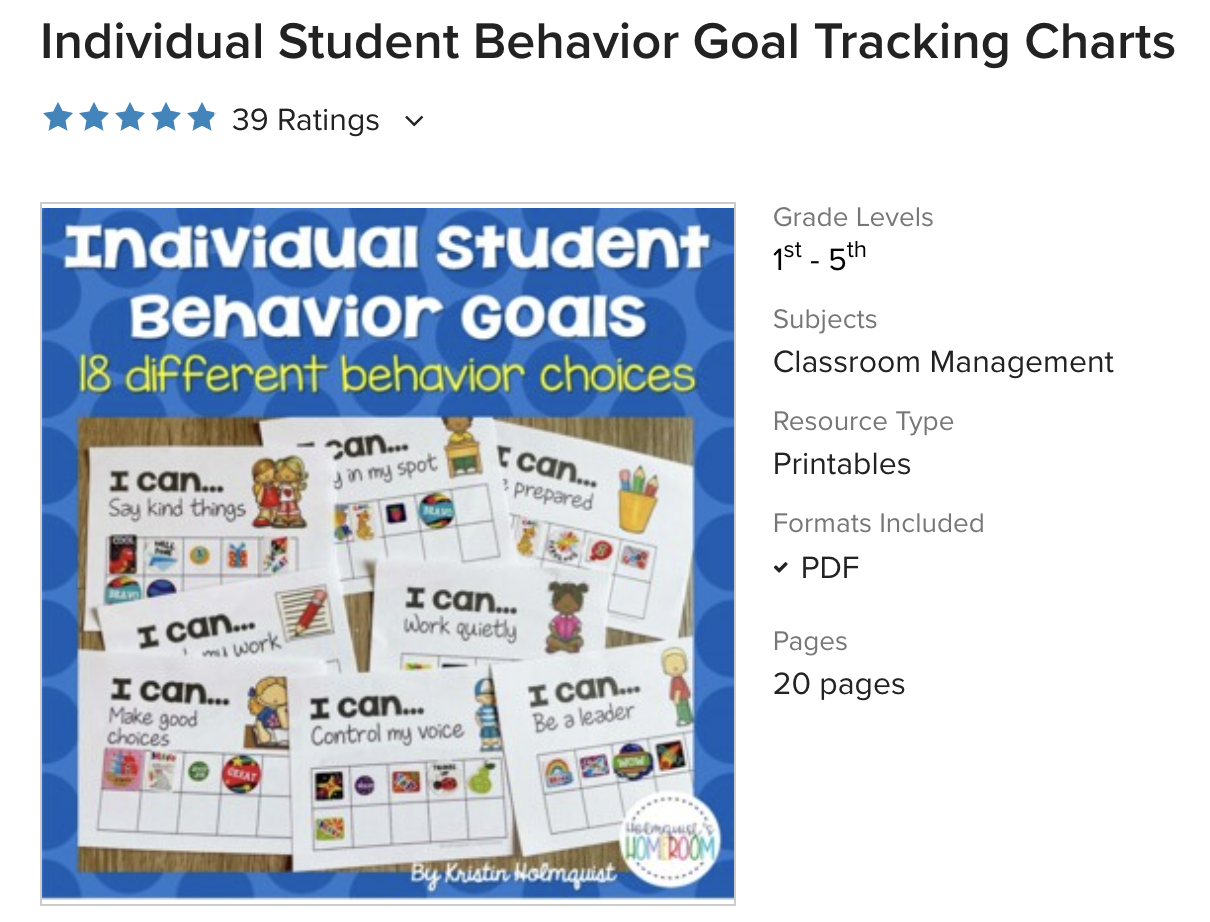Individual Behavior Charts that Work
“ A policeman pulled me over and asked me for my papers. I gladly gave him all of my students’ essays to grade and drove off.”
Make Your School Awesome Staff
October 23, 2021
It's that time of year when students are settling into their routines and understanding the structure of their day. Most students are accustomed to the traditional activities and tasks within the in-person classroom setting. However, sometimes these routines and tasks can be simple for some and become a struggle for others; especially coming off of a previous year that was nothing but normal. Our littlest learners may have difficulty adjusting to staying on task and focused for an extended period of time within the in-person classroom setting. Imagine being a student that learned at home via computer screen from their couch last year, and now they are confined to a desk and chair. Depending upon the home dynamics and challenges, students may have been exposed to a structureless learning environment. Now, it's up to teachers to find ways to get them back on track and start filling in the gaps specifically in structure as a result of last year’s pandemic.
Source: theclassroomkey.com
One way to assist students in achieving on-task behaviors and focus could be implementing individualized behavior charts. Behavior charts have been around for ages and are often referred to as reward tracking charts. These charts have definitely evolved over the years and assist teachers in tracking sought-after behaviors from individual students and serve as a visual reminder for the student to record their actions. Individualized behavior charts are simple and easy to create; you need to design a functional yet motivating system that your student would be excited to utilize.
Students vary in regards to internal or external motivation. Behavior charts have several benefits when assessing whether or not students stay on track. They can assist students in achieving individual goals or eliminate poor habits that interfere with the learning progress. A behavior chart allows students to track immediate, visual feedback in a real-time setting. These visual reminders can help students stay focused and remind them what they need to do. Students must understand the goals of the behavior chart and teachers must be clear on the expectations. Positive language and meaningful rewards work best.
Source: boredpanda.com
Creating behavior charts that result in an attainable reward for the student versus a negative consequence is highly recommended. Positive reward systems assist students with intrinsic motivation to stay on task and achieve learning goals. Charts and rewards should be selected individually to the student and be meaningful to them. The students should be excited and interested in the prize received. There is no one size fits all solution in education, and there's certainly no one size fits all solution to creating a successful behavior chart. Select or create a behavior chart that is visually compelling to your student’s interests and is age-appropriate. Be consistent with reiterating the importance of following the visual cues and positive reinforcements within the structure of the chart.
Developing a perfect behavior chart can take time and become a trial-and-error process. If your chart is not switching things up, learn more about your students' interests to find the perfect tailored images and rewards to fit your students' needs. Think outside of the box and make sure your student is engaged and excited to participate.
Here are some ideas and resources to help you develop your own.
Source: Make Your School Awesome
This student loves race cars and board games, so we combined the two!
The reward selected was 5 min of a race car game during choice time.
Positive Language Example: “I really like how you kept your hands to yourself and in your space during pack up today, you are doing a great job!
Source: teacherspayteachers.com
Source: teacherspayteachers.com
Important teacher takeaways!
Make your individual behavior charts meaningful and custom to your student’s needs and interests. Remember a chart may work for a short period of time and may need to be switched up. Review the rules and expectations often and model good behavior using positive statements. Click on the links below to learn about whole-group classroom behavior tips and ideas.
TEACH, SHARE, INSPIRE







